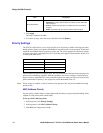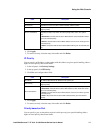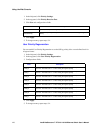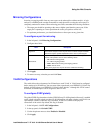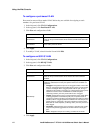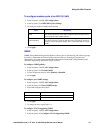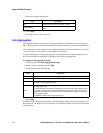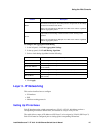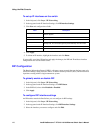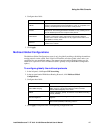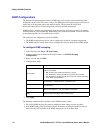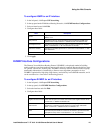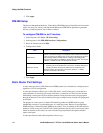
126 Intel® NetStructure™ ZT 8101 10/100 Ethernet Switch User’s Manual
Using the Web Console
To set up IP interfaces on the switch
1. In the left panel, click Layer 3 IP Networking.
2. In the top panel under IP Interface Settings, click
IP Interface Settings.
3. Click
New and configure these fields.
4. Click
Apply.
5. To delete an IP interface, highlight the interface and click
Delete.
If you modify an existing IP interface and apply the changes, the RIP and IP multicast interface
configurations are reset to default values.
RIP Configuration
The Routing Information Protocol (RIP) is a distance-vector protocol that uses the hop count as its
criteria for making routing decisions. RIP is an Interior Gateway Protocol (IGP), which means that
it performs routing within a single autonomous system.
To globally enable or disable RIP
1. In the left panel, click Layer 3 IP Networking.
2. In the top panel under IP Interface Settings, click
RIP Status.
3. In the RIP field, select either
Disabled or Enabled.
4. Click
Apply.
To configure RIP interface settings
An IP Interface must be defined before you can configure its RIP settings.
1. In the left panel, click
Layer 3 IP Networking.
2. In the top panel under IP Interface Settings, click
RIP Interface Settings.
3. Select the interface you want to configure and click
Edit.
Field Description
Interface Name
Specifies the name of the IP interface. The interface name for the “default”
VLAN is System.
IP Address Specifies the IP address of the IP interface.
Subnet Mask Specifies the subnet mask for the IP address.
VLAN Name
Specifies the VLAN that is assigned to this IP interface. This VLAN must
already exist. The IP interface gets its port membership from the VLAN.
Active Enables or disables the IP interface.
Port Member Specifies the ports which are to be members of this IP interface.



